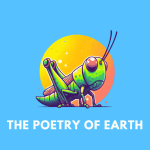The poem The Poetry of Earth by John Keats explores the connection between nature and the eternal flow of life. It contrasts the vibrancy of nature in both summer and winter, symbolizing the unbroken song of life. The questions and answers in this article aim to help readers understand the deeper meaning of the poem, its themes, and its poetic devices.
The Poetry Of Earth Question Answers:
Question: What is the central theme of The Poetry of Earth?
Answer: The central theme of The Poetry of Earth is the eternal beauty of nature, which never ceases, no matter the season or time.
Question: How does John Keats describe nature in summer?
Answer: In summer, John Keats describes the earth as full of life, where the birds sing, and the grasshopper takes over when the birds rest.
Question: What role does the grasshopper play in the poem?
Answer: The grasshopper in the poem symbolizes the continuity of life in nature during the summer when birds take a rest. It keeps the song of nature alive.
Question: How does the poem depict winter?
Answer: In winter, the poem portrays a quieter scene where the cricket, rather than the grasshopper, carries on the song of the earth, ensuring nature’s voice is heard even in the cold months.
Question: What does the cricket represent in the poem?
Answer: The cricket represents the endurance of life and sound in nature during the harsh winter months. It symbolizes the warmth and life that continues even when the earth appears still.
Question: What is the tone of the poem The Poetry of Earth?
Answer: The tone of the poem is calm and reflective, celebrating the timeless beauty and resilience of nature.
Question: How does Keats use imagery in the poem?
Answer: Keats uses vivid imagery to bring the seasons to life. He describes the sounds of summer and winter in detail, making the reader feel the warmth of summer and the chill of winter.
Question: What is the structure of the poem?
Answer: The poem is structured in the form of a sonnet, with two parts: one focusing on summer and the other on winter.
Question: Why is the poem titled The Poetry of Earth?
Answer: The title signifies the ongoing beauty and music of nature that never fades, regardless of the season. Earth’s poetry, or the natural world’s song, is continuous.
Question: How does the poem reflect Romantic ideals?
Answer: The poem reflects Romantic ideals by emphasizing the beauty of nature, the power of imagination, and the continuity of life through the natural world.
Question: What is the significance of the grasshopper and cricket in the poem?
Answer: The grasshopper and cricket symbolize the cycle of life and nature’s ability to remain vibrant and alive, even as the seasons change.
Question: How does the poem explore the passage of time?
Answer: The poem contrasts the liveliness of summer with the stillness of winter, yet both seasons are connected through the ongoing sounds of the grasshopper and cricket, showing the continuity of time.
Question: What poetic devices does Keats use in the poem?
Answer: Keats uses imagery, personification, and symbolism to convey the idea of nature’s unending beauty and resilience.
Question: What is the mood of the poem?
Answer: The mood of the poem is peaceful and serene, reflecting a deep appreciation for the natural world.
Question: How does Keats personify the grasshopper and cricket?
Answer: Keats personifies the grasshopper and cricket by attributing them with the ability to “sing” and “carry on the song,” giving them human-like qualities.
Question: How is the cycle of nature depicted in The Poetry of Earth?
Answer: The cycle of nature is depicted through the changing roles of the grasshopper and cricket, symbolizing the shift from summer to winter, but also the continuity of nature’s voice throughout the year.
Question: What does the grasshopper’s song represent in summer?
Answer: The grasshopper’s song represents the vibrancy and energy of summer, a time when nature is full of life and activity.
Question: What does the cricket’s song symbolize in winter?
Answer: The cricket’s song symbolizes warmth and life during the cold winter, showing that nature’s song continues even in the harshest conditions.
Question: Why is the poem considered timeless?
Answer: The poem is considered timeless because it reflects the unchanging beauty of nature and the eternal cycle of life, themes that are relevant across all eras.
Question: How does The Poetry of Earth reflect Keats’ appreciation of nature?
Answer: The poem reflects Keats’ deep appreciation of nature by highlighting its never-ending beauty and resilience, showing that life in nature continues, no matter the season.
Question: In what ways is the poem a celebration of nature?
Answer: The poem celebrates nature by showing its endless capacity for life and beauty, even in the face of changing seasons.
Question: How does the poem depict the relationship between man and nature?
Answer: The poem suggests a harmonious relationship between man and nature, with nature continuing its song for all to appreciate, regardless of the season.
Question: How does The Poetry of Earth relate to Keats’ other works?
Answer: Like many of Keats’ works, The Poetry of Earth reflects his fascination with nature, beauty, and the passage of time, common themes in his poetry.
Question: What makes The Poetry of Earth different from other nature poems?
Answer: The Poetry of Earth focuses on the continuity of life in nature through the changing seasons, rather than on the beauty of nature in a single moment or scene.
Question: What is the significance of the poem’s setting?
Answer: The setting, moving from summer to winter, highlights the changing yet continuous nature of life and sound in the natural world.
Question: How does Keats evoke the senses in the poem?
Answer: Keats evokes the senses through his descriptions of sound—the songs of the grasshopper and cricket—and the contrasting temperatures of summer and winter.
Question: How does the poem reflect Keats’ philosophy of “negative capability”?
Answer: The poem reflects Keats’ philosophy of “negative capability” by embracing the mystery and beauty of nature without needing to explain it, allowing the reader to simply experience it.
Question: What emotions does the poem evoke in the reader?
Answer: The poem evokes feelings of peace, continuity, and a deep appreciation for the enduring beauty of nature.
Question: What does the poem suggest about the permanence of nature?
Answer: The poem suggests that nature is eternal and resilient, continuing its song through the grasshopper in summer and the cricket in winter.
Question: What is the role of silence in the poem?
Answer: Silence plays a significant role in the poem, as it contrasts with the sounds of the grasshopper and cricket, highlighting the moments when nature’s voice is still but not absent.
Question: How does Keats create contrast between summer and winter?
Answer: Keats creates contrast between summer and winter by describing the vibrant song of the grasshopper in summer and the quieter, more subtle sound of the cricket in winter.
Question: Why is The Poetry of Earth considered a meditative poem?
Answer: The Poetry of Earth is considered a meditative poem because it encourages readers to reflect on the continuous cycle of life in nature and the beauty that exists in every season.
Question: What literary movement is The Poetry of Earth associated with?
Answer: The Poetry of Earth is associated with the Romantic literary movement, which emphasized the beauty of nature, emotion, and the sublime.
Question: How does the poem reflect Keats’ views on the passage of time?
Answer: The poem reflects Keats’ view that while time passes and seasons change, the beauty and song of nature remain constant and eternal.
Question: How does The Poetry of Earth embody the theme of continuity?
Answer: The theme of continuity is embodied in the poem through the transition from the grasshopper’s song in summer to the cricket’s song in winter, symbolizing the unbroken flow of life in nature.
Question: What is the significance of sound in the poem?
Answer: Sound is significant in the poem as it represents the voice of nature, continuing through the grasshopper and cricket, ensuring that nature’s presence is always felt.
Question: How does Keats’ love of nature influence the poem?
Answer: Keats’ love of nature is evident throughout the poem, as he celebrates its unending beauty, resilience, and capacity for life in both summer and winter.
Question: What is the message of The Poetry of Earth?
Answer: The message of the poem is that the beauty and life of nature are eternal, continuing through all seasons and weather conditions.
Question: How does the poem encourage readers to appreciate nature?
Answer: The poem encourages readers to appreciate nature by highlighting its timeless beauty and resilience, showing that life in nature never ceases, even in winter.
Question: What role does the imagination play in the poem?
Answer: Imagination plays a key role in the poem as it allows readers to hear the songs of the grasshopper and cricket, symbolizing nature’s voice throughout the seasons.
Question: How does The Poetry of Earth connect to the idea of immortality?
Answer: The poem connects to the idea of immortality by suggesting that nature’s beauty and life are eternal, continuing through the grasshopper in summer and the cricket in winter.
Question: Why is The Poetry of Earth considered a reflection on the cycles of life?
Answer: The poem is considered a reflection on the cycles of life because it contrasts the seasons of summer and winter, symbolizing the ongoing cycle of life in nature.
Question: How does Keats’ language enhance the poem’s themes?
Answer: Keats’ language enhances the poem’s themes by using vivid imagery and personification to bring the grasshopper and cricket to life, symbolizing the continuity of nature.
Question: What does The Poetry of Earth suggest about the relationship between nature and time?
Answer: The poem suggests that while time passes and seasons change, nature remains constant, with its beauty and life continuing uninterrupted.
Question: How does Keats use the sonnet form to structure the poem?
Answer: Keats uses the sonnet form to divide the poem into two parts, one focusing on the liveliness of summer and the other on the stillness of winter, yet both connected by the unbroken song of nature.
Question: What is the significance of the final lines of the poem?
Answer: The final lines of the poem emphasize the continuity of nature’s song, suggesting that the cricket’s voice will always be heard, even in the stillness of winter.
Latest Posts
- Step-by-step guide to download and apply for jee mains admit card 202
- Comprehensive 2025 government holidays and recruitment details for job seekers
- JEE Mains Admit Card 2025: Your Step-by-Step Guide to Downloading the Hall Ticket
- Everything You Need to Know About 2025 Government Holidays Recruitment
- Comprehensive Guide to rrb d group recruitment 2025 – Eligibility, Vacancies, and Application
- Detailed guide to nps trust recruitment 2025 vacancies, eligibility and apply process
- Comprehensive guide to hpcl recruitment 2025 notification, vacancies, and application process
- ignou bed admission 2025 complete recruitment guide with eligibility and process
- Comprehensive Guide to Indian Army Agniveer Recruitment 2025 Notification and Jobs
- Everything You Must Know About CBSE Board Exams 2025 Changes & New Rules




